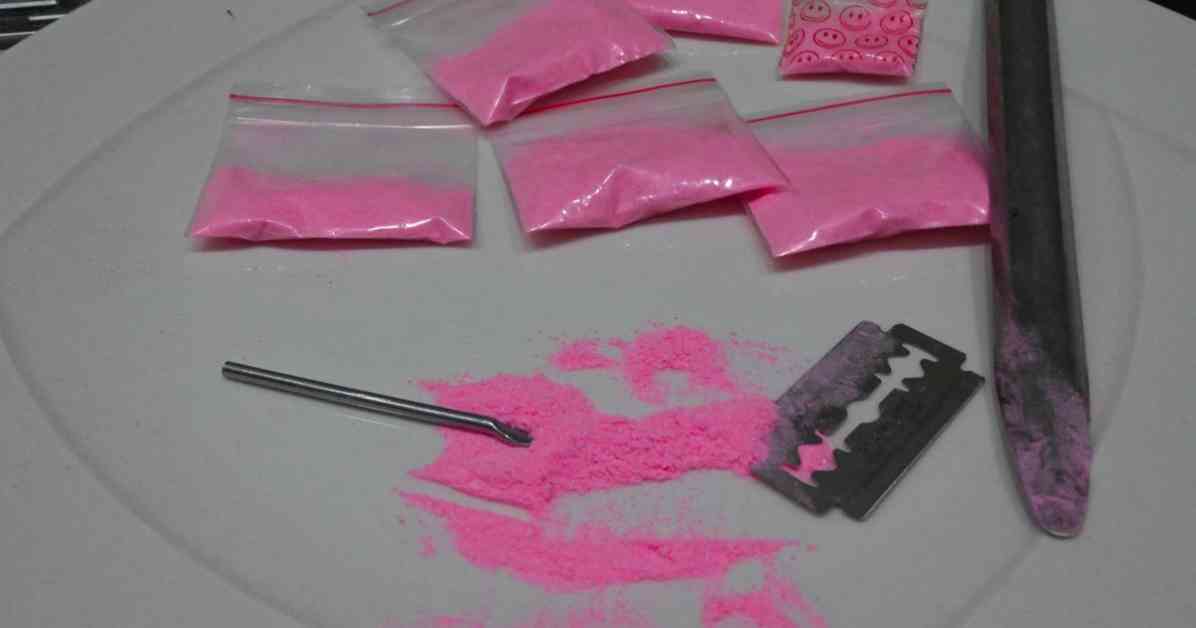A synthetic drug cocktail known as pink cocaine is rapidly becoming a major concern in the UK after emerging in Spain. Spanish authorities recently carried out their largest ever synthetic drug bust, seizing a significant quantity of pink cocaine alongside over a million ecstasy pills. The operation targeted drug networks across Ibiza and Malaga, shedding light on the dangers of this new substance.
The dangerous substance has been linked to a growing number of drug-related deaths, prompting European drug harm reduction organizations to call for urgent action to address the risks it poses. Pink cocaine, despite its name, does not necessarily contain cocaine. Instead, it is often a mixture of various other substances, including MDMA, ketamine, and 2C-B. MDMA, commonly known as ecstasy, is a stimulant with psychedelic properties, while ketamine is a powerful anesthetic with sedative and hallucinogenic effects. 2C drugs are classified as psychedelics but can also produce stimulant effects.
Typically found in powder or pill form, pink cocaine is known for its vibrant color, which is designed to enhance its visual appeal. It is colored using food coloring and sometimes strawberry or other flavorings. The original psychedelic form of the drug dates back to 1974 and was first synthesized by American biochemist Alexander Shulgin. However, the modern variant emerged around 2010 in Colombia and is considered a knock-off version.
The drug gained popularity on the party scene in Latin America and has now spread to Europe. Common names for pink cocaine vary widely, from “cocaina rosada” and “tuci” to “Venus” and “Eros.” Today’s pink cocaine is an unpredictable mix of substances, and that is where much of its danger lies. Users often expect a stimulant similar to cocaine, but the inclusion of ketamine can lead to serious health risks. Abuse of ketamine, which is widely available as a club drug, can lead to unconsciousness or dangerously labored breathing, increasing the potential dangers of pink cocaine.
Its aesthetic look and “designer drug” status have contributed to its appeal, particularly among young people and first-time users, mirroring the historical allure of drugs like cocaine and MDMA. This highlights a persistent trend where certain substances are glamourized despite their risks. Experts compare taking pink cocaine to playing Russian Roulette with substance use, underscoring the unpredictable and dangerous nature of this drug. Pink cocaine has spread beyond Ibiza to the UK, with evidence of its traction in Scotland, parts of Wales, and England, as well as a surge in availability in New York City.
Health officials across Europe are alarmed by the spread of pink cocaine. The drug is difficult to detect through standard drug testing, particularly in Spain, where the current testing regime is not yet equipped to identify all its components. Sold for around US$100 per gram (£76) in Spain, pink cocaine is often marketed as a high-end product. The legal response varies, with Spanish authorities working to curb its distribution.
In the UK, pink cocaine falls under the Misuse of Drugs Act 1971, which classifies drugs into three categories—class A, B, and C—based on their perceived harm. While pink cocaine itself may not be explicitly listed, the substances commonly found in it are controlled by the law. Both MDMA and 2C-B are class A drugs, while ketamine is a class B drug.
One of the most urgent needs highlighted by the rise of pink cocaine is for accessible drug-checking services. Drug-checking kits are an important harm reduction tool for people looking to test the substances they intend to consume, helping users identify unknown components and offering a layer of protection in a high-risk environment. Public awareness campaigns and support services are also crucial in reducing harm associated with the use of pink cocaine.
The growing popularity of pink cocaine serves as a stark reminder of the ever-changing landscape of illicit drugs, where aesthetics, social media trends, and risky behavior can combine to create new threats. While its pink hue and “designer” label may attract a younger crowd, the unpredictable cocktail of chemicals it contains presents a serious and growing danger. As pink cocaine continues to spread through Europe and beyond, it is crucial that authorities, health services, and the public are equipped to deal with the risks it poses.
As the dangers of pink cocaine continue to escalate, the need for proactive measures to address this issue becomes increasingly urgent. It is essential for government agencies, health organizations, and communities to work together to combat the spread of this harmful substance and protect individuals from its destructive effects. By raising awareness, providing support services, and implementing effective harm reduction strategies, we can strive towards a safer and healthier society for all.
Impact on Public Health
The rise of pink cocaine poses a significant threat to public health, with its unpredictable composition and widespread availability contributing to a growing number of drug-related deaths. The popularity of this substance among young people and first-time users further exacerbates the risks associated with its use. Health officials across Europe are sounding the alarm on the dangers of pink cocaine, urging for immediate action to address this escalating crisis.
Role of Harm Reduction Strategies
Harm reduction strategies, such as drug-checking services and public awareness campaigns, play a crucial role in mitigating the risks associated with pink cocaine use. By providing individuals with the tools and information they need to make informed decisions about their drug use, these initiatives can help prevent overdoses and fatalities. It is imperative that these services are made more accessible and widely available to ensure the safety of all individuals.
Collaborative Efforts for Prevention
Preventing the spread of pink cocaine requires a collaborative effort from government agencies, healthcare providers, and community organizations. By working together to implement comprehensive prevention measures, we can effectively combat the dangers posed by this harmful substance and protect the well-being of our communities. It is essential that we prioritize the health and safety of individuals by taking proactive steps to address the growing threat of pink cocaine.













